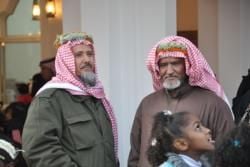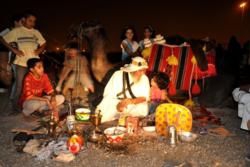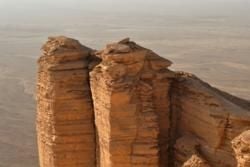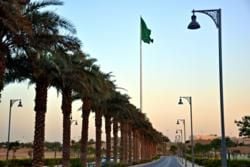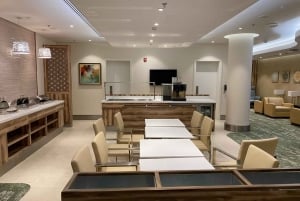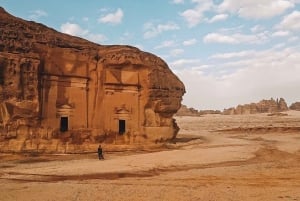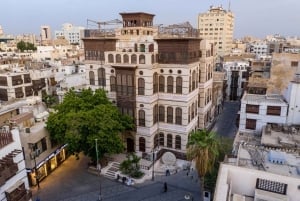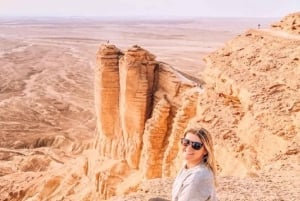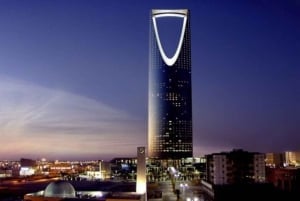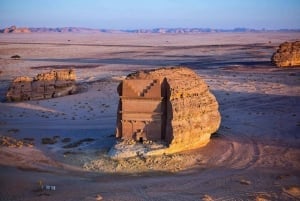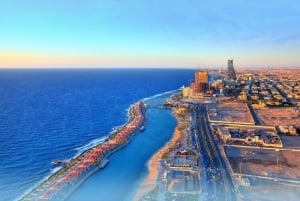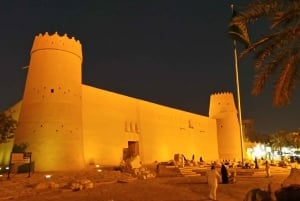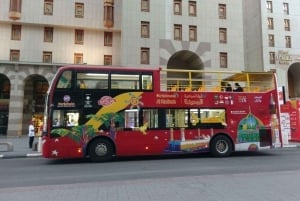Saudi Arabia Regional Overview
Camel and caravan routes that zigzagged the desert from the Arabian Sea to the Mediterranean Basin and Africa gave rise to Saudi Arabia’s early trade traditions. But rising out of the sand dunes today are the hustle and bustle of gleaming cities equipped with cutting edge business and living amenities. Not to be outdone, a serenely natural geographical beauty lies intact across most of the desert kingdom.
Predominantly a business and pilgrimage destination, Saudi Arabia is largely geared towards the recreational and spiritual needs of its urban visitors. But for the curious and intrepid, this desert kingdom is also the land less-travelled with its hidden wealth of history and dramatic scenery.
The sparkling blue life of the Red Sea meets golden desert on Saudi Arabia’s western shores, marking one of its many stark physical contrasts. The surreal landscape of the infamous Empty Quarter (Rub’ Al Khali) unfolds across the southern region.
The kingdom stretches across 80% of the Arabian peninsula, flanked by Jordan in the north, Iraq in the northeast; the Persian Gulf, Kuwait, Qatar and United Arab Emirates in the east, Oman in the southeast and Yemen in the south.
Saudi Arabia is divided into 13 provinces spread over 5 regions:
- The central region known as Nejd, enclosing Hail, Qassim and Riyadh provinces;
- The western region known as Hejaz, enclosing the provinces of Makkah, Medina, Tabuk and Baha;
- The northern region embracing the Northern Border and Jouf provinces;
- The eastern region including the Eastern Province, Dammam; and
- The southern region embracing the provinces of Asir, Jizan and Najran.
Riyadh is part of the Najd region, the capital of Saudi Arabia and its largest city. English is commonly spoken, used in business and is a compulsory second language in schools.
The Kingdom's official language is Arabic.
Jeddah is part of the Makkah province and the Hejaz region. It is the second largest city, but the largest coastal city, perched on the tropical shores of the Red Sea, a sea famed for its lush marine life and coral reefs.
Saudi Arabia is an absolute monarchy ruled by Sharia (Islamic law). The Kingdom’s population is estimated at just over 28 million (2011 census) of which nearly 9 million are non-nationals. The population growth rate is 2.9%.
In addition to possessing the world’s second largest oil reserve and being the world's second largest oil exporter, Saudi Arabia is the largest market in the Arabian Gulf region offering both local and foreign investors and exporters a wide array of opportunities across a range of business sectors. With a high per capita income and a decreasing public debt, the Kingdom is undergoing major changes and developing at a rapid rate.
Across the Kingdom, preservation of ancient archaeology, history and traditions mingle with a fast-developing education for all, clear-cut business conditions, an eye on investment in environmentally-friendly technologies and natural resources, and a free market economy. To open its doors to foreign investment, Saudi Arabia acceded to the World Trade Organization in 2005.
The Saudi currency is Saudi Riyals which can be converted to any foreign currency. Credit cards are accepted in all stores.
Geography
Saudi Arabia’s geography is predominantly desert but includes semi deserts and shrub lands as well as numerous valleys, oases and basins.
The southwestern province of Asir is mountainous with Mount Sawda at its highest point, standing at 3000 meters. The climate is harsh and dry with great temperature extremes in the interior while high humidity affects the climate on both coasts. Asir, however, enjoys a wetter and milder climate.
The Red Sea separates Arabia from Africa, and forms the western coastline of Saudi Arabia. The sea’s southern end starts at the Indian Ocean while at its northern point, the sea splits into two channels: the Gulf of Aqaba and the Suez Canal, connecting to the Mediterranean through the latter. The Red Sea has a rich ecosystem populated by a diverse marine life and surrounding wildlife.
A Holy Land
Saudi Arabia is the homeland of Arabs believed to have originated from the Arabian Peninsula and the birthplace of Islam, the world’s second largest religion. The two holiest mosques: Masjed Al-Haram and Masjed Al-Nabawi were built in the cities of Mecca and Medina.
The ultimate Holy Land and Pilgrimage destination for millions of Muslims across the world, Saudi Arabia is also known as The Land of the Two Holy Mosques.
Almost 100% of the Saudi population are Muslims. The country is generally conservative and women are required to cover their hair and wear a long black loose outfit (abaya) when in public. Women are not allowed to drive. Most restaurants are divided into two sections: family sections for women, married couples and families, and sections for single men. Except for Jeddah and some districts, sheeshas (water pipes) are banned in public restaurants and coffee shops. Alcohol is illegal everywhere in Saudi Arabia.
Friday is a Muslim holiday. Shops and businesses are closed, though some shops and food outlets are open for business in the afternoon. The weekend in Saudi Arabia is Friday and Saturday.
Muslims pray five times a day. All shops have to close for prayer time, but they re-open after approximately 30 minutes. Check local newspapers for exact prayer times!
The Hijri (Islamic) calendar is the primary calendar for the majority of Saudis. The lunar Hijri calendar begins in the year 622 AD, the year of Hijra (exodus) when the Prophet Muhammad (Peace be upon him: a phrase traditionally spoken by Muslims after mentioning the prophet’s name) undertook his journey from Mecca to Medina. The current Hijri year is 1434 AH (from the Latin anno hegirae).
Photo credits on this page: Blue Abaya Photography


